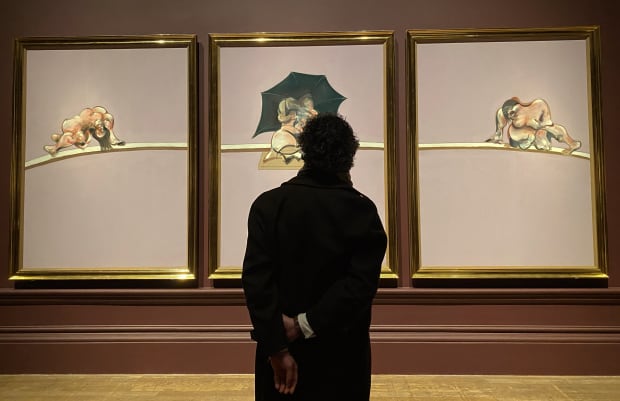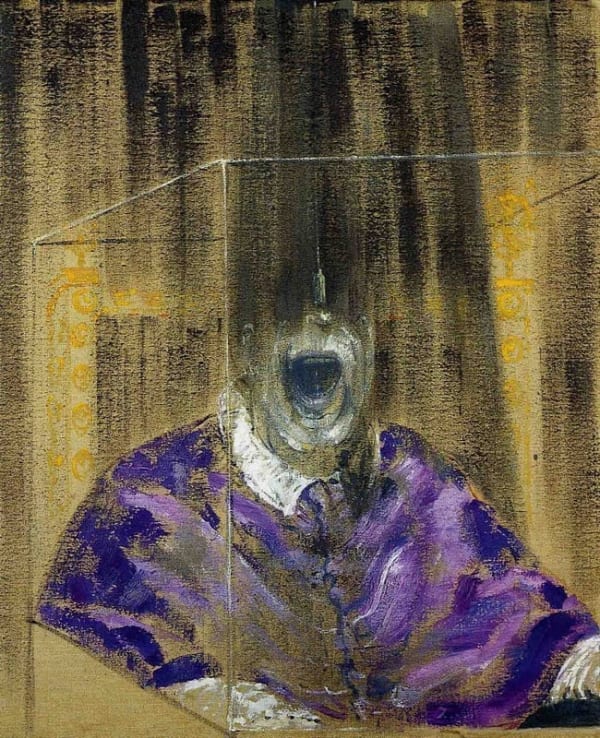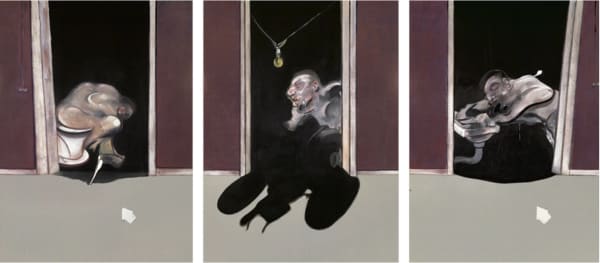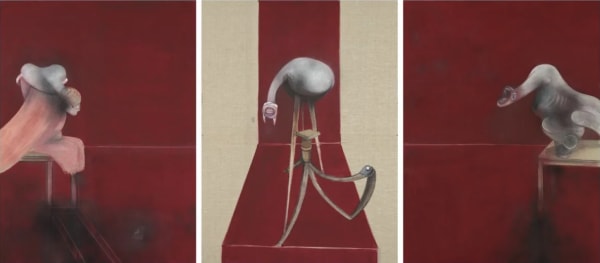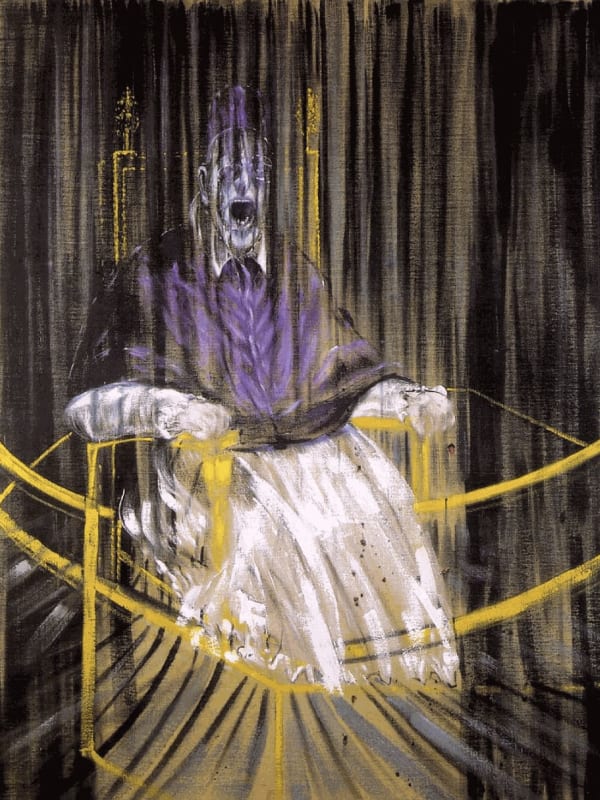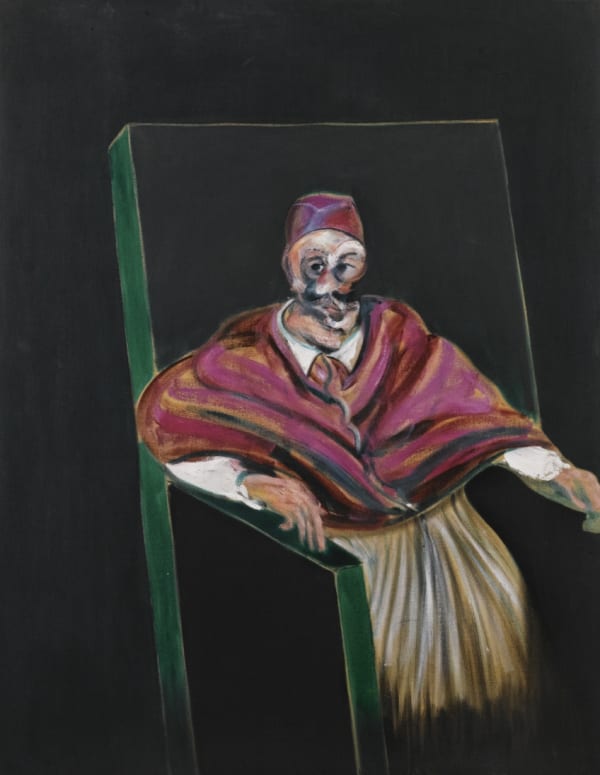-

Man looking at Francis Bacon's Triptych, Studies of the Human Body, 1970.
©Francis Bacon, Image taken at ©Royal Academy London
-
Notable Works
Triptychs, Head Series and Crucifixion -
HEAD SERIES
-
“We are born and we die and that’s it. There’s no meaning, so you might as well make something remarkable while you’re here.”
- Francis Bacon
Francis Bacon’s Head series, painted between 1948 and 1949, marked a turning point in his career and laid the foundation for much of his later work. Across six haunting portraits, Bacon experimented with distortion, abstraction, and space to explore the psychological tension within the human face. The figures appear trapped within confined interiors, their features blurred or disfigured.These paintings capture Bacon’s early search for a visual language that could convey sensation rather than likeness. The final work in the series, Head VI, is often seen as a precursor to his later Screaming Popes, establishing the claustrophobic atmosphere and emotional intensity that would define his art for decades to come. -
TRIPTYCHS
-
“I paint to excite myself and make something that means something to me.”
– Francis Bacon
Francis Bacon’s triptychs stand among the most defining achievements of his career. Across three panels, he explored movement, time, and emotional continuity. Using repetition to heighten the psychological charge of his subjects, the format allowed him to stage moments of tension and release, transforming private experiences into something monumental.Bacon used the triptych form to chart the extremes of human experience. Each work functions as both a narrative and a meditation, its fragmented structure mirroring the instability of memory. Within these frames, Bacon achieved some of his most powerful and enduring expressions of what it means to live, and what it means to die. -
Papal Works
-
“I wanted to paint the scream more than the horror.”
– Francis Bacon
Francis Bacon’s Pope paintings remain some of the most iconic and unsettling images in modern art. Inspired by Diego Velázquez’s Portrait of Pope Innocent X (1650), Bacon reimagined the figure of authority not as serene or divine, but as human, fallible, and tormented. Between the late 1940s and mid-1950s, he produced more than forty versions of the subject, each one distorted, confined, or silently screaming behind veils of colour and glass-like enclosures.These works reveal Bacon’s ability to strip away power and expose vulnerability. The screaming mouth, one of his most enduring motifs, becomes a symbol of both suffering and release, transforming a figure of religious dominance into a portrait of existential dread. In reducing the Pope to raw emotion, Bacon turned one of Western art’s most recognisable icons into an image of isolation, fear, and humanity itself. -
Prints and Multiples
Explore a range of Prints from Bacon -
Original Works
Explore a range of Originals by Bacon -
Francis Bacon Biography
Discover more about Bacon
